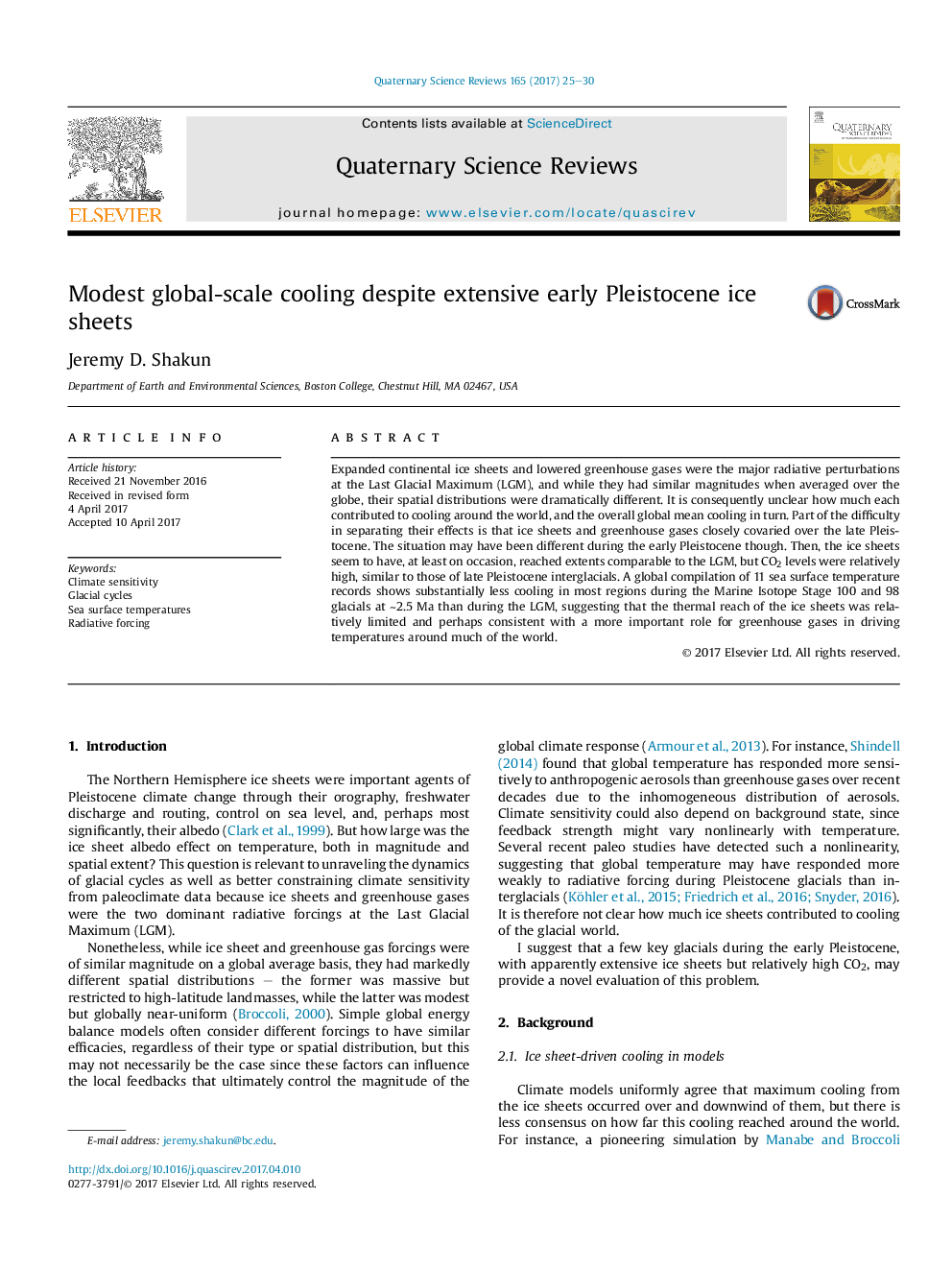| کد مقاله | کد نشریه | سال انتشار | مقاله انگلیسی | نسخه تمام متن |
|---|---|---|---|---|
| 5786735 | 1640770 | 2017 | 6 صفحه PDF | دانلود رایگان |
عنوان انگلیسی مقاله ISI
Modest global-scale cooling despite extensive early Pleistocene ice sheets
ترجمه فارسی عنوان
خنک کننده با درجه حرارت خورشید در مقیاس جهانی، با وجود صفحات یخ زدگی اولیه پیلستوسن
دانلود مقاله + سفارش ترجمه
دانلود مقاله ISI انگلیسی
رایگان برای ایرانیان
کلمات کلیدی
حساسیت هوا، چرخه یخبندان دمای سطح دریا، اعمال تابشی،
موضوعات مرتبط
مهندسی و علوم پایه
علوم زمین و سیارات
زمین شناسی
چکیده انگلیسی
Expanded continental ice sheets and lowered greenhouse gases were the major radiative perturbations at the Last Glacial Maximum (LGM), and while they had similar magnitudes when averaged over the globe, their spatial distributions were dramatically different. It is consequently unclear how much each contributed to cooling around the world, and the overall global mean cooling in turn. Part of the difficulty in separating their effects is that ice sheets and greenhouse gases closely covaried over the late Pleistocene. The situation may have been different during the early Pleistocene though. Then, the ice sheets seem to have, at least on occasion, reached extents comparable to the LGM, but CO2 levels were relatively high, similar to those of late Pleistocene interglacials. A global compilation of 11 sea surface temperature records shows substantially less cooling in most regions during the Marine Isotope Stage 100 and 98 glacials at â¼2.5 Ma than during the LGM, suggesting that the thermal reach of the ice sheets was relatively limited and perhaps consistent with a more important role for greenhouse gases in driving temperatures around much of the world.
ناشر
Database: Elsevier - ScienceDirect (ساینس دایرکت)
Journal: Quaternary Science Reviews - Volume 165, 1 June 2017, Pages 25-30
Journal: Quaternary Science Reviews - Volume 165, 1 June 2017, Pages 25-30
نویسندگان
Jeremy D. Shakun,
